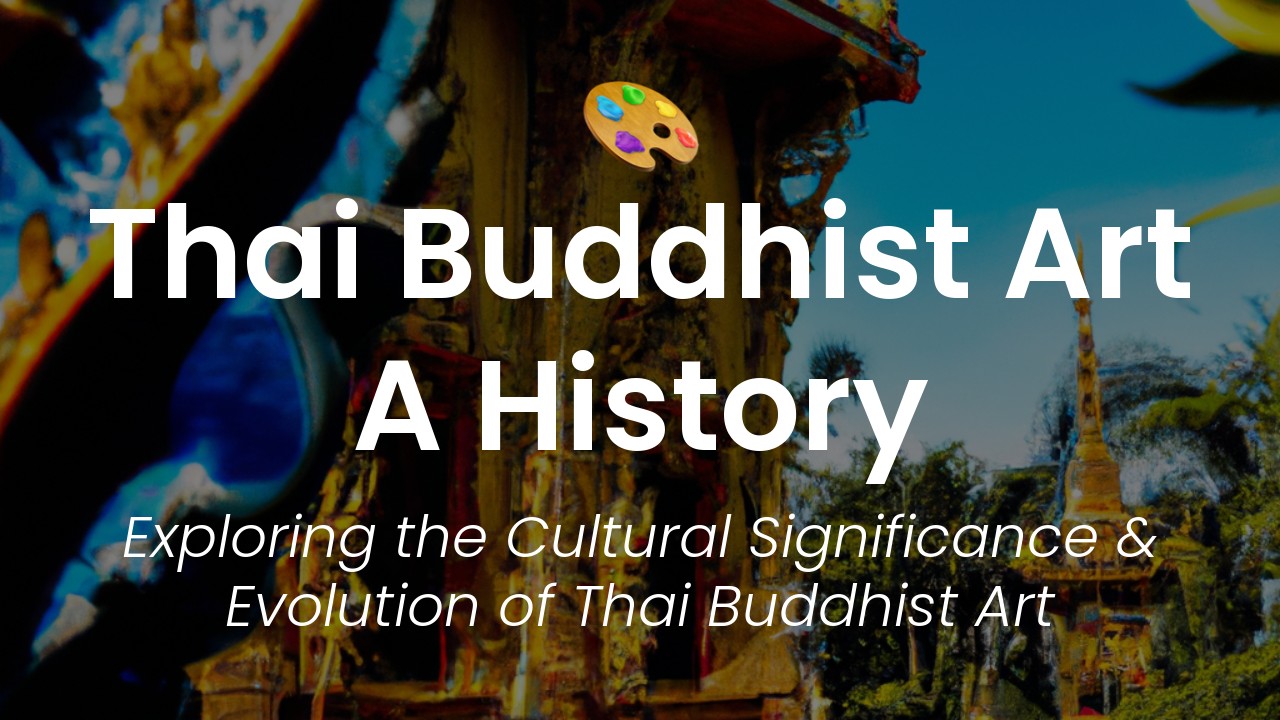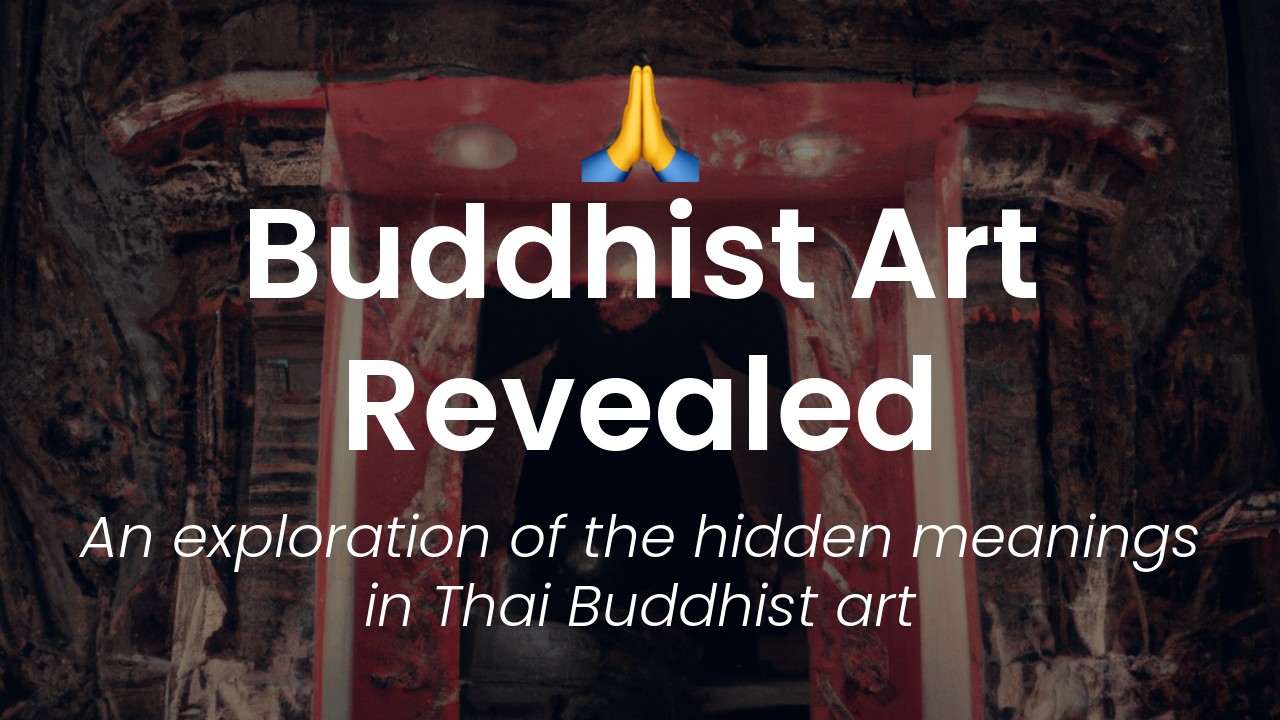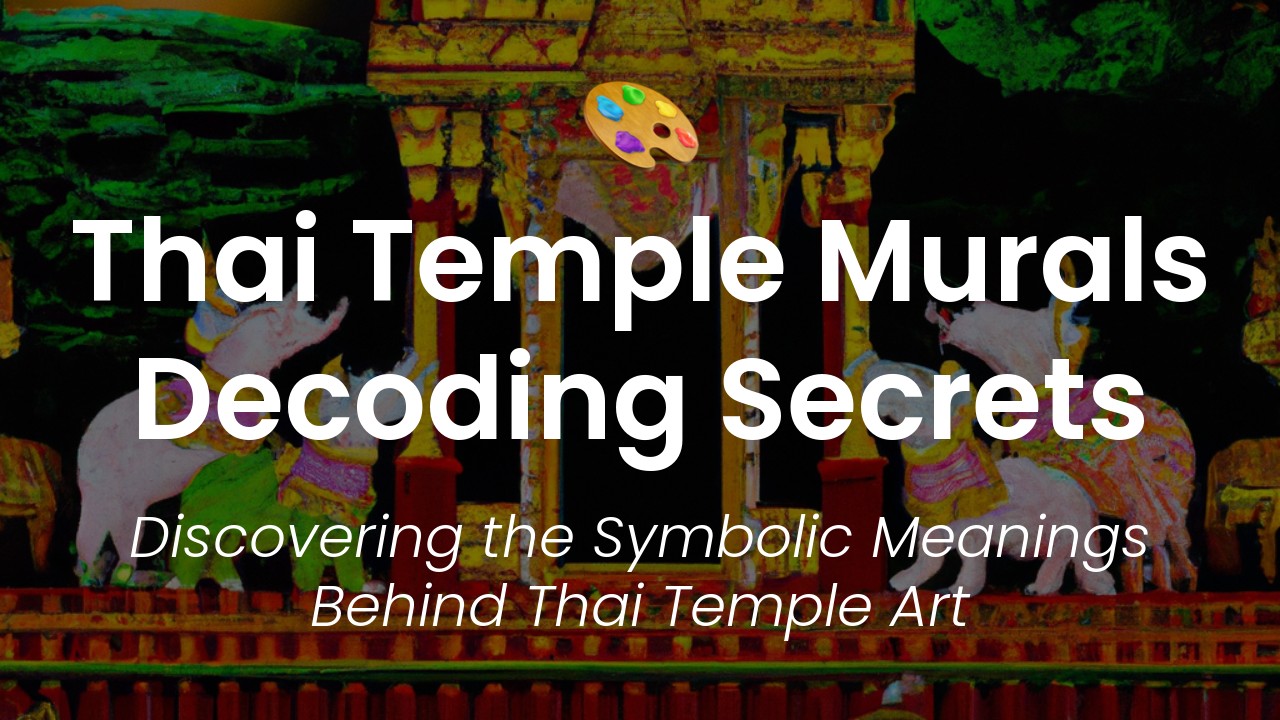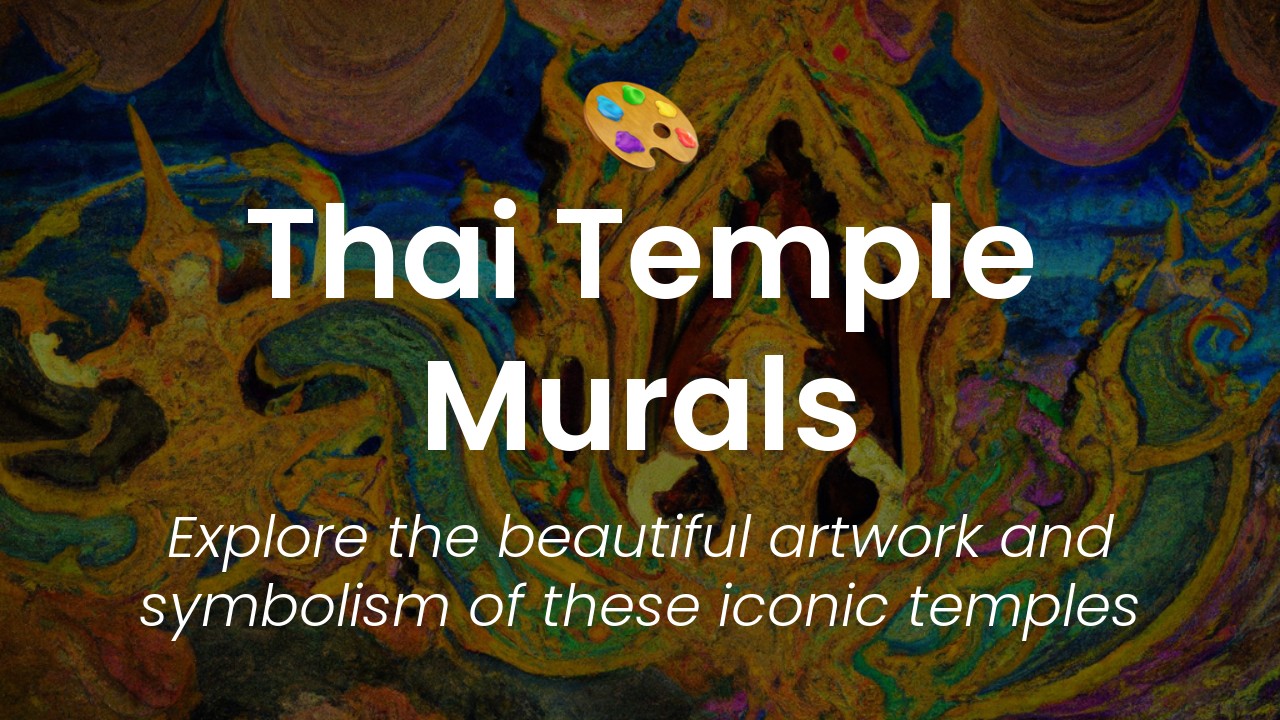Hello, lovely readers! I am Sirinya, and today I am excited to dive deep into the rich cultural heritage of Thailand. Specifically, we will be discussing the fascinating history of Thai Buddhist art. As a country known for its colorful, opulent temples and majestic, golden Buddha statues that dot the landscape, it is no surprise that Thai Buddhist art has a deep and complex history.
One of the most significant aspects of Thai Buddhist art is its historical and cultural context. Buddhism has been the primary religion of Thailand for over a thousand years, and that influence is evident in the art throughout the country. Buddhist art in Thailand has a unique style and expression that reflects the country's diverse cultural heritage and unwavering devotion to Buddhism.
Thailand also has a rich and varied history, which has influenced the development of Buddhist art in the country. From Indian, Khmer, and Chinese influences to internal struggles for power and cultural change, the art has been shaped by events throughout Thailand's history. With distinct phases of Thai art that have developed over the centuries, the evolution of Buddhist art in the country is a fascinating and complex story to tell.
So, get ready to explore the origins and significance of Thai Buddhist art with me. We'll delve into the cultural and historical contexts that have shaped it, and examine some of the essential techniques, symbols, and styles of this captivating art form!
Origins of Thai Buddhist Art
Thai Buddhist art has a long and fascinating history. Its origins can be traced back to the 7th century when Buddhism first arrived in Thailand. At that time, the Thais practiced a form of animism, which involved worshiping spirits believed to reside in trees, rocks, and other natural phenomena. However, the peaceful and compassionate teachings of Buddhism soon gained popularity, and as a result, various forms of Buddhist art began to emerge.
The earliest examples of Buddhist art in Thailand were mostly sculptures and carvings. These artworks were often created in the likeness of the Buddha and other important figures from Buddhist mythology. The art was made from various materials, including gold, bronze, and stone.
Influence from India and Cambodia
In the centuries that followed, Buddhism continued to play a significant role in Thai culture and society. As a result, Thai Buddhist art continued to evolve, with influences coming from neighboring countries, including India and Cambodia.
For example, during the Sukhothai Era (13th-15th century), which is often referred to as the "Golden Age" of Thai Buddhism, artists were heavily influenced by the Indian Gupta style of art. This style is characterized by a focus on simplicity, harmony, and naturalism.
Similarly, during the Ayutthaya Era (14th-18th century), which was a time of great artistic flourishing, artists took inspiration from Khmer art which originated from present-day Cambodia. This style is characterized by intricate and ornate designs, and is often associated with the Angkor Wat temple complex.
Sukhothai Era (13th-15th century)
The Sukhothai period is considered the "Golden Age" of Thai Buddhist art. It was during this time that the iconic image of the seated Buddha with his right hand resting on his knee and his left hand in his lap first appeared. This image, known as the "Sukhothai Buddha", quickly became one of the most iconic symbols of Thai Buddhism.
In addition to the Sukhothai Buddha, this period also saw the emergence of other important Buddhist figures, including the Walking Buddha and the Reclining Buddha. These sculptures were often made from bronze or stone and were highly detailed, featuring intricate carvings and engravings.
Ayutthaya Era (14th-18th century)
The Ayutthaya period was a time of great artistic flourishing in Thailand. During this time, Thai Buddhist art was heavily influenced by Khmer art from present-day Cambodia. This is evidenced by the ornate and intricate designs seen in many of the sculptures and carvings from this period.
One of the most famous examples of Ayutthaya-era Buddhist art is the Emerald Buddha. This statue, which is made from jadeite and is just 66 centimeters tall, is considered one of the most important and revered Buddha images in Thailand. It is now housed in the Wat Phra Kaew temple in Bangkok.
Rattanakosin Era (19th-20th century)
The Rattanakosin period, which spanned the 19th and 20th centuries, was characterized by a sense of nationalistic pride and a renewed interest in traditional Thai culture. As a result, Thai Buddhist art during this period was marked by a return to simplicity and naturalism.
One of the most significant works of Buddhist art from this time is the reclining Buddha at Wat Pho in Bangkok. This statue, which measures an impressive 46 meters in length and 15 meters in height, is made from plaster and features intricate inlaid mother-of-pearl designs.
Modern Thai Buddhist Art
Thai Buddhist art continues to evolve and change to this day. Modern artists are experimenting with new materials and techniques, while still honoring the rich tradition and history of Thai Buddhist art.
One of the most exciting developments in modern Thai Buddhist art is the use of technology. Digital artists are creating highly detailed and immersive 3D renderings of important Buddhist figures and scenes, bringing this ancient art form into the modern era.
Preservation and Conservation Efforts
Due to their historical and cultural significance, Thai Buddhist artworks are carefully preserved and conserved. In addition to the efforts of individual temples and cultural institutions, the Thai government has implemented regulations and laws to protect these artworks.
For example, the Fine Arts Department of Thailand is responsible for overseeing the conservation and preservation of the country's cultural heritage. They have implemented strict regulations regarding the restoration of artwork, and only licensed professionals are allowed to undertake restoration work.
In addition, the Thai government has worked to promote awareness and appreciation of Thai Buddhist art both within the country and around the world. Museums and galleries dedicated to Thai art and culture have been established in major cities, and efforts are underway to promote Thai art and culture to a global audience.
Conclusion
Thai Buddhist art has a long and fascinating history that spans over 1,000 years. From the earliest sculptures and carvings to the highly detailed and ornate works of the Ayutthaya period, and the more recent resurgence of simplicity and naturalism in modern Thai Buddhist art, this art form reflects the rich cultural and religious heritage of Thailand.
Thanks to the efforts of individuals, organizations, and the Thai government, this important art form continues to be preserved and celebrated. And as artists continue to experiment and push the boundaries of traditional Thai Buddhist art, it is clear that this ancient art form will continue to captivate and fascinate for many years to come.





